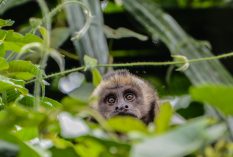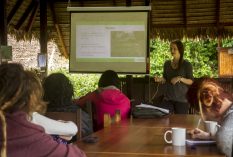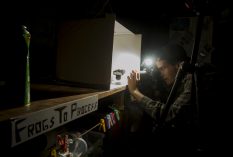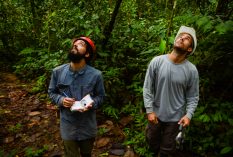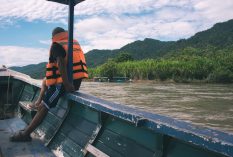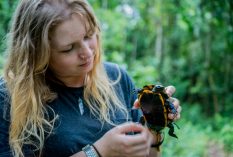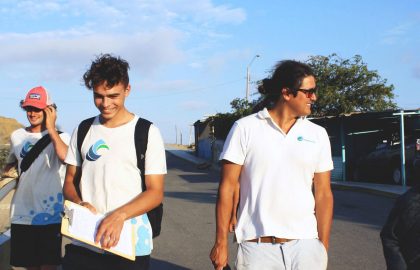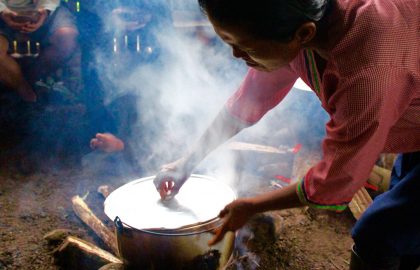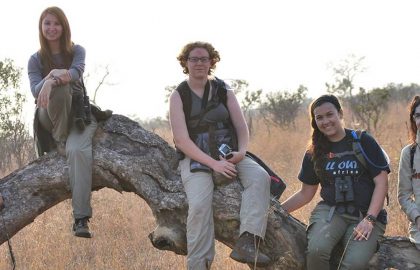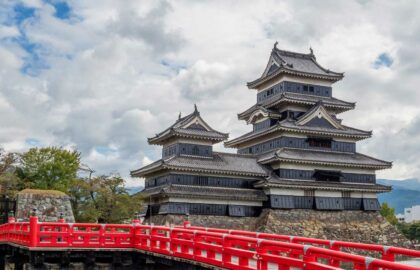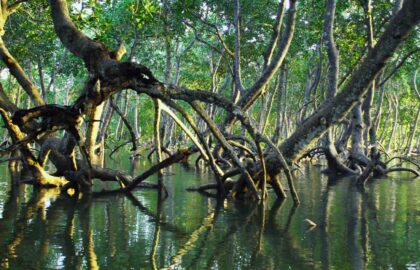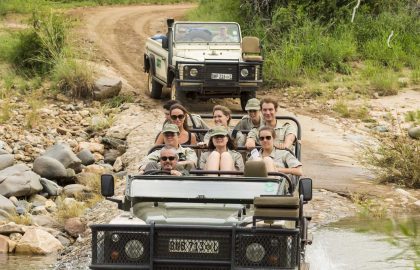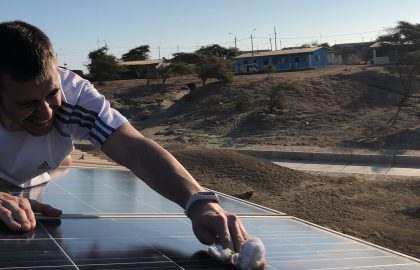Description
Location: Peruvian Amazon, Cuzco region
Duration: 6 months
Start Dates: 2023 – 19th July, 11th October.
Cost: $7,200 USD
Includes: all food, accommodation, airport pickup, orientation and all project related activities
Does not Include: Flights, travel insurance, visas and vaccinations
Benefits:
- An ultimate 6 month experience which will teach you enormous amounts about Conservation work in the Amazon and set you up for a career in the field.
- Get involved in Sustainable Initiatives which work with the local community
- Get hands on field experience and help implement conservation projects which make a real impact
- Work on various projects ranging from Avian monitoring, Agroforestry, Butterfly monitoring,Community Development initiatives.
Intro.
This internship set in the heart of the Peruvian Amazon offers you the opportunity to actively participate in important conservation and sustainable community development initiatives. We offer a career development programme designed to provide you with a deeper level of engagement in not-for-profit conservation work where you will gain extensive practical experience in field techniques and leadership skills, enabling you to effectively advance your career and ability to make a difference. You will be immersed in a structured learning course which is delivered via one-on-one mentoring and numerous training workshops. We focus also on the professional and personal skills which will prove immensely valuable when you go on to apply for jobs and further your career.
Founded in 2002, our Foundation has worked to establish sustainable practices throughout the Amazon. True sustainability encompasses all areas of life in the rainforest – people, plants and wildlife. We take a holistic approach which values environmental stewardship; we look at real issues faced by local people and try to develop practical, sustainable alternatives. We envision a sustainable Amazon where education and learning is the forefront for driving understanding and change. The Amazon is under constant threat from many processes that cause habitat destruction such as logging, agriculture and mining. Our sustainable initiative projects provide alternative forms of income that can help protect the rainforest as well as give people a livelihood. This means that we help protect one of the most biodiverse places in the world, preventing the extinction of species, and other associated effects of rainforest destruction, such as climate change.
Research Projects
All our projects focus on two main areas; Environmental Research which focuses directly on the rainforest, and Sustainable Initiatives where we work with local Communities. The Manu Biosphere is one of the most biodiverse places in the world, with millions of species awaiting study, and numerous local communities living nearby.
In Manu we have a great opportunity to study conservation and biodiversity issues on micro and macro scales; from endemic species of frogs that are not found anywhere else to a larger ecosystem approach. By studying animal distribution and ecology on our reserve, looking at where they can be found, at what times and what weather conditions, we can begin to understand the relationship between the forest and the wildlife. The people that live in Manu face issues of poverty, low education standards, malnutrition and lack of resources. In trying to provide for their families, people can sometimes end up in dangerous, unsustainable jobs like slash and burn agriculture and illegal logging. Our community projects were set up to investigate and provide alternative, safe, sustainable ways to earn their money and feed their families.
Research
The Amazon is a delicately balanced ecosystem, however, human destruction of the rainforest is happening at such an alarming rate that these pristine environments are being systematically destroyed.
So what happens when a patch of destroyed rainforest is left alone, when the jungle is allowed to reclaim it and life slowly returns? Our project is uniquely placed to investigate this, as for many years now our reserve has been naturally regenerating from when it was once farmland. Nowadays, the rainforest that covers the land falls into three main categories based on what logging pressure and agricultural impacts it has experienced:
1) completely cleared and regenerating,
2) partially cleared and regenerating, and
3) selectively logged now regenerating.
Our biodiversity monitoring plan is investigating the value of regenerating tropical rainforest for biodiversity and how species move back to forest that has a history of human disturbance. This is the challenge we have set ourselves to answer through the Research Monitoring Programme, which is run in partnership with leading universities such as the University of Glasgow and Oxford University. By developing long-term comparative studies we can understand how forests regenerate that have experienced different types and levels of disturbance. We examine how the diversity of life can return if we promote and nurture successful rainforest regeneration. As agricultural and industrial activities move into new areas to exploit, the biological value of regenerating forests is becoming increasingly important and our studies aim to investigate this.
Our scientific research programme has 3 main areas of focus:
- Biodiversity
- Ecosystem-Services
- Socio-economics
As an intern, you will work alongside our field staff with the investigations that will answer these questions.
Mascotania Macaw monitoring programme
The blue-headed macaw is classified as Vulnerable on the IUCN Red List, meaning it is threatened with extinction. The blue-headed macaw lives in a very specific habitat and so is heavily affected by deforestation and other human disturbances. Their numbers are further damaged by exploitation for the pet trade, a growing problem in Peru.
So far we have found a decrease in the number of blue-headed macaws on the reserve over the past few years, correlating with an increase in tourist numbers. Our aim is to successfully understand their behaviour and to educate tourists about responsible bird watching. You will be involved in this by helping to monitor the number of blue-headed macaws visiting our clay lick at dawn as well as noting their activity, and recording the impacts of tourism on the birds.
Avian monitoring in different stages of forest regeneration
Bird species composition and diversity can signify many different things about the forest, such as forest type, structure, age, health, and level and type of human impact. Hunting pressure and habitat fragmentation through roads and deforestation can largely affect bird populations. For example, healthy populations of game birds such as guans, tinamous and trumpeters indicate low to zero hunting pressure, whilst the presence of a highly specialist species such as the harpy eagle may indicate undisturbed primary forest. Not only is the ecology of many of these tropical foothill species poorly known, but the true value of regenerating forest for birds is understudied. We conduct early morning transects along the reserve to listen and look for birds.
Butterfly monitoring in different stages of forest regeneration
There are currently more than 550 known species of butterfly at the reserve. Butterflies are significant bio-indicators as well as pollinators for many plant species, which makes understanding their distribution throughout the forest, species density and fluctuations over time, a significant research project for us. Butterfly larvae have highly specialised diets, so we can learn about the vegetation in each part of the forest by looking at the species we find in them, and by comparing our findings in each forest type we can see what effect regenerating forest has on species distribution.
You will be involved in setting up butterfly traps and bait, identifying them and recording new species to the reserve. Butterflies teach us a lot about the forest and the changes that take place within it. We are working on producing a comprehensive guide for visitors to the reserve.
Amphibian and reptile monitoring in different stages of forest regeneration
Amphibians are excellent indicator species as they are extremely vulnerable to changes in their environment. They have very thin skin which they use for gas exchange, and this makes them very sensitive to chemical pollutants and also to changes in climate (e.g. temperature and humidity). This means that they are one of the most important bio-indicator species on the reserve, but it also means they are incredibly vulnerable, and are threatened by human activity the world over. Studying the way they use regenerating forest is therefore vital for assessing its conservation value.
Mammal monitoring in different stages of forest regeneration
In order to understand the importance of regenerating rainforest for mammal species, we have used a series of camera traps set up around the reserve to capture images of mammals in all three forest types. So far more than 40 large mammal species have been recorded at the MLC, including 13 individual jaguar. Due to the elusive nature of many mammal species the rest of our research is more ad-hoc. You may find yourself unexpectedly tracking puma prints for half an hour, or trying to frantically count the number of peccaries that just crossed your path. These encounters are vital to our understanding of the way mammals use regenerating forest.
Sustainable Community Initiatives
We work with local communities in Manu to create sustainable income that meets the challenges faced by remote rainforest towns. Poverty and lack of access to higher education in Manu forces many families into unsustainable work such as illegal logging, slash and burn agriculture, and mining. Not only are these often dangerous and unhealthy, with little financial return, they also contribute to rainforest destruction. To date our community projects have positively impacted more than 600 people.
Biogardens
We work specifically with local mothers to combat malnutrition, by providing resources and knowledge to build biogardens that produce nutritious, fresh food for families, and extra income through surplus crops. So far volunteers and local mothers have created over 60 family biogardens, and have helped build two institutional biogardens. Since beginning our work with biogardens in 2009, this has resulted in an annual increase in income for the direct beneficiaries of biogardens, and an increase in child nutrition and health.
Agroforestry
The agroforestry plots are planted with local farmers, and provide both short and long-term income through producing sustainable wood with banana production. This is an environmentally sustainable livelihood that provides a sustainable alternative to illegal logging activities in the surrounding forest. Agroforestry encourages species diversity, increases soil nutrition, and creates carbon credits that can be sold to further support the project.
We have helped turn more than 61 hectares of abandoned and degraded land into agroforestry plots, which have subsequently seen increased biodiversity, help plant over 10,000 banana trees, 7,000 hardwood and softwood trees, and created the first program in Peru to ever commercialise carbon credits on behalf of a local community sold to Oriel College Oxford University.
Daily Life
Your internship is split into 3 phases; 10 week training phase, 2 weeks in Cusco, and a 12 week work placement.
In the rainforest the day starts and ends earlier than normal to make the most of available daylight. You’ll adapt to your new rhythm in the rainforest within your first week. Some of our projects run on different timetables but generally you’ll find yourself in bed early, ready to get up either before or just after dawn. The projects you will undertake combine a mixture of mental and physical challenges, one day you might find yourself carrying 10 kg of batteries and SD cards to check camera traps throughout the forest, and the next day you could be helping to set up butterfly traps.
The work we do here at the Manu Learning Centre is very physically demanding. There are long days in the forest with high temperatures and humidity and difficult walking conditions. We therefore ask that you are able to easily walk 10km carrying a 10kg pack within 4 hours before you come here. If you’re enthusiastic, hands on and keen then you’ll have a great time pushing yourself with these challenges! Our friendly, experienced staff will always be on hand to help and guide, so please don’t be afraid to ask.
Below is an example of a typical day, which will vary based on which projects you’re scheduled on:
5:30am – Up early to visit the clay lick, and monitor the blue headed macaws
7am – Breakfast
7:30am – Trek into the forest to check butterfly traps
12:30pm – Lunch
1-3pm – Rest
3-5pm – Work in the MLC biogarden Spanglish
5pm – lessons whilst helping with dinner in the kitchen
6:30pm – Dinner
7:15pm – Night transect for amphibians
10:30pm – Return to lodge with amphibian bounty. Shower, hot chocolate then bed! (Note: there would be no early start the following day due to the late night)
Training phase
During your 10 week training phase you will develop and learn vital skills whilst covering every aspect of our work in the Amazon. We emphasize the integrated nature of conservation, providing a solid foundation in environmental science as well as the economic and social contexts of our sustainable community programmes. During this phase you will receive Emergency First Response (EFR) certification from qualified instructors, develop tropical field skills, learn survey methods, lead survey groups to collect quality scientific data and learn about wider conservation, biodiversity and cultural issues; all while making a positive contribution to our work and the aims of the Foundation.
Our staff will mentor, guide and assess your progress throughout the placement, helping you pass the initial phase of the programme and become eligible to move on to the work placement. Due to the challenging nature of the internship, only participants who are able to meet the expected standard will advance to the work placement phase of the programme. The standards and specific objectives that interns must achieve are explicitly defined in mentor reviews and evaluations, and will cover: health and safety, acquisition of knowledge and skills, logistics management, organisation, communication, interpersonal and teamwork skills, leadership, initiative, problem solving, and professionalism. Please note that the full programme fee is non-refundable even for participants who do not advance to the work placement; however they will be able to stay on as a volunteer.
Cusco Phase
After completing your 10 week training phase you will have a 2 week break in the Inca capital of Peru, Cusco. For the first week you will participate in a 5 day Spanish immersion course and 7 night homestay; even if you have no background with Spanish this will be an excellent opportunity for you to improve your language skills in one of the most beautiful and culturally unique cities in South America. The second week away from the rainforest has no set itinerary and is considered a self-funded, open week for you to have to yourself, visit nearby sights such as Machu Picchu or meet up with friends. As this week is not part of the programme so you must plan your own itinerary/ accommodation and budget accordingly, although we are happy to provide suggestions if you wish.
Work Placement Phase
Providing you successfully complete the volunteer stage, you will be allocated a 12 week work placement depending on your abilities and what is required in the field at that time. This decision will be made by our field team out in Manu and we will do our best to meet your preferences, however due to the changing nature of the rainforest and the needs of our research team, this may not always be possible and so we ask for your flexibility.
Travel & Accom.
You will share a room with up to three others and will receive fresh bedding each week, as well as a mosquito net. Internet access in such a remote location means that access can be sporadic and at times unreliable. If you do get the chance in your busy schedule to write home via the internet it is a chargeable service, $5USD per hour if using solar power.
Food and packed lunches are provided three times a day and is typical local fare; rice with a sauce, vegetables, soups, occasional meat. Dietary restrictions can be catered for but must be accurately and clearly stated on the application form.
Requirements
- Minimum age 18.
- Minimum 6 months commitment.
- Able to work in a hot (and often wet) tropical climate
- Able to walk at least 10km per day whilst carrying personal daily supplies
- Enjoy being outdoors all day in all types of weather
- Enjoy being outdoors in the potential presence of wild and possibly dangerous animals, snakes, and insects.
- Get low enough to access and collect samples on the ground
- Relevant academic background
- Basic English language skills.
- Necessary vaccinations
- Necessary flight & visas.
- Full travel & medical insurance – full assistance provided in arranging everything you will need if you choose our Premium Support
Costs
$7,200 USD for 6 month placement
What is included
- 24 hour in-country support, airport collection and drop-off in Cusco, Peru Accommodation in Cusco, the cloud forest, and the Manu Learning Centre
- 3 hearty meals a day
- All transport between Cusco and the rainforest, and to project work within the rainforest First Aid and CPR training and certification in remote rainforest environment
- Training and participation in all projects you will be involved in
- Mentoring sessions to keep you on track with your objectives
- 10 week course, plus certificate
- 5 days of one-on-one Spanish immersion course and 7 night family homestay in Cusco
- The chance to work at a tropical research centre alongside experienced research staff
Note that Spanish language is not a requirement for the internship however it is highly recommend that you take lessons to become at least conversational.
What is NOT included
- Flights
- Visas (if applicable)
- Vaccinations
- Travel Insurance
- Personal spending
Premium Support Upgrade
We understand there’s a great deal to plan and organise for your trip. When booking a Placement, many of our participants choose to purchase our Premium Support Upgrade to benefit from the expertise, knowledge and experience of our Project Coordinators.
We can provide the personal advice you need to ensure your trip is organised with excellence and planned with efficiency; ensuring the very best experience possible. Read more about how we can help you.
Note: Map coordinates are approximate



